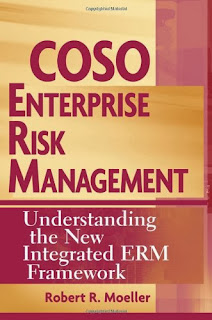A completely revised and expanded edition of the nonprofit industry finance and accounting standard Filled with authoritative advice on the financial reporting, accounting, and control situations unique to not-for-profit organizations, Financial and Accounting Guide for Not-for-Profit Organizations, Eighth Edition is recognized by professionals as the industry standard reference on not-for-profit finance and accounting. Prepared by the PricewaterhouseCoopers Not-for-Profit Industry Services Group, the book includes accounting, tax, and reporting guidelines for different types of organizations, step-by-step procedures and forms, and more. A new chapter on public debt has also been added.
Presents the latest updates to regulatory reporting and disclosure changes in recent years
Reflects the totally revamped and revised AICPA accounting and audit guide for not-for-profit organizations
Addresses concerns of all nonprofit organizations, including health and welfare organizations, colleges and universities, churches and other religious organizations, libraries, museums, and other smaller groups
Includes step-by-step procedures and forms, detailed explanations of financial statements, and a how-to section on setting up and keeping the books
Financial and Accounting Guide for Not-for-Profit Organizations, Eighth Edition is the completely revised and expanded new edition of the bestselling not-for-profit accounting guide.
From the Back Cover
Completely revised and expanded edition of the nonprofit industry's bestselling finance and accounting standard The accounting environment has changed dramatically over the past ten years, especially in the nonprofit sector. Filled with authoritative advice on the financial reporting, accounting, and control situations unique to not-for-profit organizations, this new updated Eighth Edition of Financial and Accounting Guide for Not-for-Profit Organizations addresses the many changes that have recently affected the finance and accounting practices of the nonprofit sector, with a focus on fair value accounting.
Representing the collaborative efforts of many expert PricewaterhouseCoopers professionals, Financial and Accounting Guide for Not-for-Profit Organizations presents the accounting and reporting guidelines for different types of nonprofits, complete guidance on tax and compliance reporting requirements, illustrated explanations of various acceptable financial statements, a how-to section on setting up and keeping the books with step-by-step procedures and forms, and commentary on computers and accounting software.
Highlighting organizations that have fully integrated "net asset" accounting into their financial reporting, this completely revised and streamlined Eighth Edition has been updated to include:
The latest updates on regulatory reporting and disclosure changes
The introduction of fair value accounting, which affects the ways in which investments, contributions receivable, and split interest agreements are viewed and valued
Completely revamped and revised AICPA accounting and audit guidelines for nonprofit organizations
Many new topics, including microfinance and expanded disclosure on gifts-in-kind accounting, valuation, and reporting
A new chapter on the municipal bond market
FASB Codification and how to find accounting literature
A new appendix addressing the convergence of IFRS with U.S. GAAP
Long recognized as the industry-standard reference on not-for-profit finance and accounting, Financial and Accounting Guide for Not-for-Profit Organizations is a must-have for nonprofit accountants and financial managers, nonprofit executives and directors, boards of directors/trustees, and CPAs for nonprofit organizations.
As a celebratory bonus, when you purchase this print version, you will also receive a free e-book download of Financial and Accounting Guide for Not-for-Profit Organizations, Eighth Edition. For details, see the inside back cover of this book.
About the Author
JOHN H. McCARTHY served as the national leader of PricewaterhouseCoopers' Education and Nonprofit Practice before his retirement in 2005. Since then, he has served as the Senior Vice President for Administration and Finance at Northeastern University, an adjunct lecturer at Harvard University's Kennedy School of Government, and on the boards of several educational and nonprofit institutions.
NANCY E. SHELMON retired as a senior partner from PricewaterhouseCoopers in 2010 after more than thirty years working with not-for-profit and higher education clients. A frequent speaker at AICPA and state society conferences, she also served as a member of the AICPA's Not-for-Profit Expert Panel for eleven years and has worked with some of the most widely respected not-for-profit organizations in North America.
JOHN A. MATTIE serves as PricewaterhouseCoopers' National Education and Nonprofit Practice Leader. He currently serves on the Financial Accounting Standards Board Not-for-Profit Advisory Committee, and is the firm's representative on the AICPA Not-for-Profit Entities Expert Panel and the AICPA Government Audit Quality Control Center.
Product Details :
- Series: Wiley Nonprofit Authority (Book 6)
- Hardcover: 714 pages
- Publisher: Wiley; 8 edition (March 6, 2012)
- Language: English
- ISBN-10: 1118083660
- ISBN-13: 978-1118083666
- Product Dimensions: 1.5 x 7.4 x 10.3 inches
More Details about Financial and Accounting Guide for Not-for-Profit Organizations (Wiley Nonprofit Authority), 8th Edition
,+8th+Edition.jpg)


,+3rd+Edition.jpg)


,+1st+Edition.jpg)

,+1st+Edition.jpg)


+(2014),+1st+Edition.jpg)


